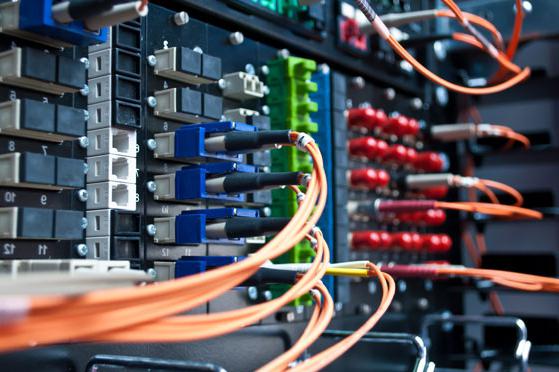Transfer of information. Information transfer channels
Information transfer is a term that combines many physical processes of information movement in space. Any of these processes involves such components as the source and receiver of data, the physical carrier of information and the channel (medium) of its transmission.
Information transfer process
The initial receptacles of data are various messages transmitted from their sources to receivers. Between them are channels for transmitting information. Special technical devices-converters (encoders) form physical data carriers - signals - based on the content of messages. The latter are subjected to a number of transformations, including coding, compression, modulation, and then sent to the communication lines. After passing through them, the signals undergo inverse transformations, including demodulation, decompression and decoding, as a result of which the original messages are extracted from them and perceived by the receivers. 
Information messages
A message is a kind of description of a phenomenon or object, expressed as a set of data that has signs of a beginning and an end. Some messages, such as speech and music, are continuous functions of sound pressure time. In telegraph communication, a message is the text of a telegram in the form of an alphanumeric sequence. A television message is a sequence of messages-frames that the camera lens “sees” and captures them at a frame rate. The vast majority of messages transmitted recently through information transmission systems are numerical arrays, text, graphics, as well as audio and video files. 
Information signals
The transmission of information is possible if it has a physical carrier, the characteristics of which change depending on the content of the transmitted message in such a way that they overcome the transmission channel with minimal distortion and can be recognized by the receiver. These changes in the physical storage medium form an information signal.
Today, information is transmitted and processed using electrical signals in wired and radio communication channels, as well as thanks to optical signals in FOCL.

Analog and digital signals
A well-known example of an analog signal, i.e. continuously changing in time is the voltage taken from the microphone, which carries a speech or musical information message. It can be amplified and wired to the sound systems of the concert hall, which will carry speech and music from the stage to the audience in the gallery.
If, in accordance with the magnitude of the voltage at the output of the microphone, the amplitude or frequency of high-frequency electrical oscillations in the radio transmitter is continuously changed in time, then an analog radio signal can be transmitted on the air. The TV transmitter in the analog television system generates an analog signal in the form of a voltage proportional to the current brightness of the image elements perceived by the camera lens.
However, if the analog voltage from the microphone output is passed through a digital-to-analog converter (DAC), then its output will no longer be a continuous function of time, but a sequence of readings of this voltage taken at regular intervals with a sampling frequency. In addition, the DAC also performs quantization according to the level of the initial voltage, replacing the entire possible range of its values with a finite set of values determined by the number of binary digits of its output code. It turns out that a continuous physical quantity (in this case, this is voltage) turns into a sequence of digital codes (digitized), and then it can be stored, processed and transmitted in digital form through information transmission networks. This significantly increases the speed and noise immunity of such processes. 
Information transfer channels
Usually, this term refers to the complexes of technical means involved in the transmission of data from the source to the receiver, as well as the environment between them. The structure of such a channel, using typical means of information transmission, is represented by the following sequence of transformations:
II - PS - (KI) - KK - M - LPI - DM - DC - DI - PS
AI is a source of information: a person or another living being, a book, a document, an image on a non-electronic medium (canvas, paper), etc.
PS is a converter of information message into information signal, which performs the first stage of data transmission. Microphones, television and video cameras, scanners, fax machines, PC keyboards, etc. can act as PS.
CI is an information encoder in an information signal to reduce the volume (compression) of information in order to increase its transmission rate or reduce the frequency band required for transmission. This link is optional, as shown in parentheses.
KK - channel encoder to increase the noise immunity of the informsignal.
M is a signal modulator for changing the characteristics of intermediate carrier signals depending on the value of the information signal. A typical example is the amplitude modulation of a carrier signal of a high carrier frequency depending on the value of a low-frequency information signal.
LPI - an information transmission line representing a combination of the physical environment (for example, an electromagnetic field) and technical means for changing its state in order to transmit a carrier signal to the receiver.
DM is a demodulator for separating the information signal from the carrier signal. Present only in the presence of M.
DC - channel decoder for detecting and/or correcting errors in the information signal that occurred on the LPI. Present only in the presence of CC.
DI - information decoder. Present only in the presence of CI.
PI - information receiver (computer, printer, display, etc.).
If the information transfer is two-way (duplex channel), then on both sides of the LPI there are modem units (MODulator-DEModulator) that combine M and DM links, as well as codec units (COder-DEcoder) that combine encoders (KI and KK) and decoders (DI and DC). 
Characteristics of transmission channels
The main distinguishing features of the channels include bandwidth and noise immunity.
In the channel, the information signal is exposed to noise and interference. They can be caused by natural causes (for example, atmospheric for radio channels) or be specially created by the enemy.
The noise immunity of transmission channels is increased by using various kinds of analog and digital filters to separate information signals from noise, as well as special message transmission methods that minimize the effect of noise. One of these methods is the addition of extra characters that do not carry useful content, but help control the correctness of the message, as well as correct errors in it.
The bandwidth of the channel is equal to the maximum number of binary symbols (kbps) transmitted by it in the absence of interference in one second. For different channels, it varies from a few kbps to hundreds of Mbps and is determined by their physical properties.
Information transfer theory
Claude Shannon is the author of a special theory of coding transmitted data, who discovered methods for combating noise. One of the main ideas of this theory is the need for redundancy of the digital code transmitted over information transmission lines. This allows you to restore the loss if some part of the code is lost during its transmission. Such codes (digital information signals) are called noise-immune. However, code redundancy should not be taken too far. This leads to the fact that the transmission of information is delayed, as well as to the rise in the cost of communication systems. 
Digital signal processing
Another important component of the theory of information transmission is a system of methods for digital signal processing in transmission channels. These methods include algorithms for digitizing initial analog inform signals with a certain sampling rate determined on the basis of Shannon's theorem, as well as methods for generating, on their basis, noise-protected carrier signals for transmission over communication lines and digital filtering of received signals in order to separate them from interference.



